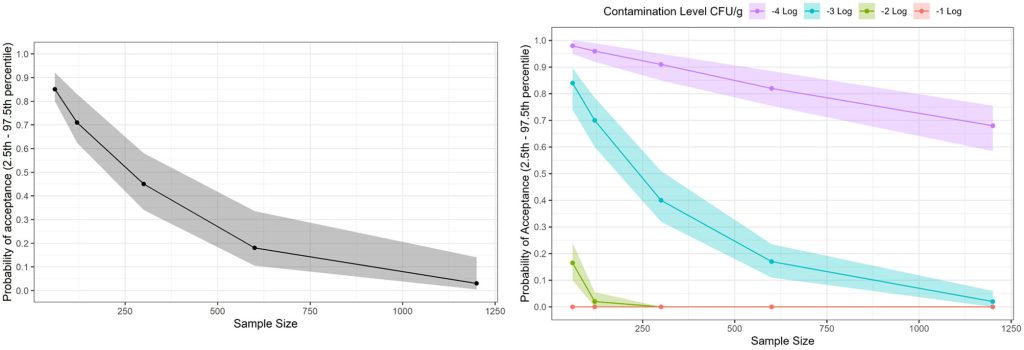Abstract
Commercial leafy greens customers often require a negative preharvest pathogen test, typically by compositing 60 produce sample grabs of 150 to 375 g total mass from lots of various acreages. This study developed a preharvest sampling Monte Carlo simulation, validated it against literature and experimental trials, and used it to suggest improvements to sampling plans. The simulation was validated by outputting six simulated ranges of positive samples that contained the experimental number of positive samples (range, 2 to 139 positives) recovered from six field trials with point source, systematic, and sporadic contamination. We then evaluated the relative performance between simple random, stratified random, or systematic sampling in a 1-acre field to detect point sources of contamination present at 0.3% to 1.7% prevalence. Randomized sampling was optimal because of lower variability in probability of acceptance. Optimized sampling was applied to detect an industry-relevant point source [3 log(CFU/g) over 0.3% of the field] and widespread contamination [−1 to −4 log(CFU/g) over the whole field] by taking 60 to 1,200 sample grabs of 3 g. More samples increased the power of detecting point source contamination, as the median probability of acceptance decreased from 85% with 60 samples to 5% with 1,200 samples. Sampling plans with larger total composite sample mass increased power to detect low-level, widespread contamination, as the median probability of acceptance with −3 log(CFU/g) contamination decreased from 85% with a 150-g total mass to 30% with a 1,200-g total mass. Therefore, preharvest sampling power increases by taking more, smaller samples with randomization, up to the constraints of total grabs and mass feasible or required for a food safety objective.
